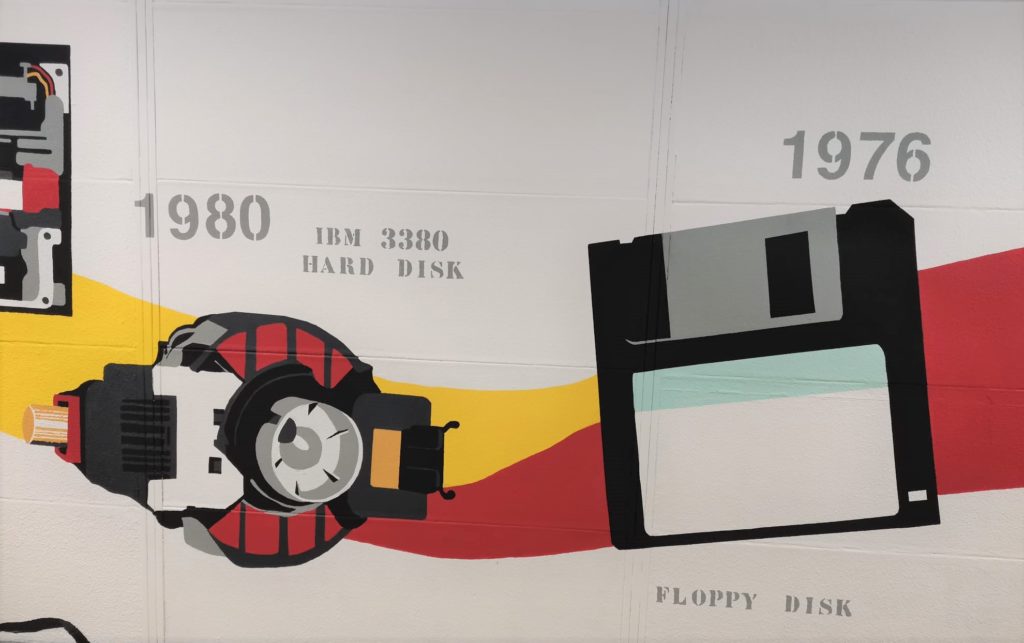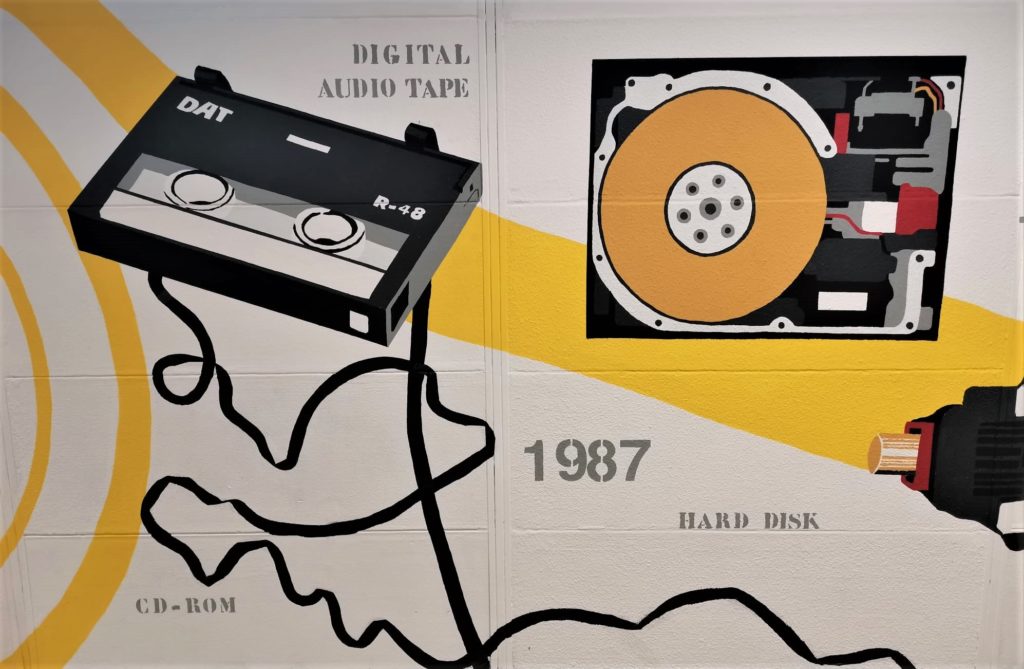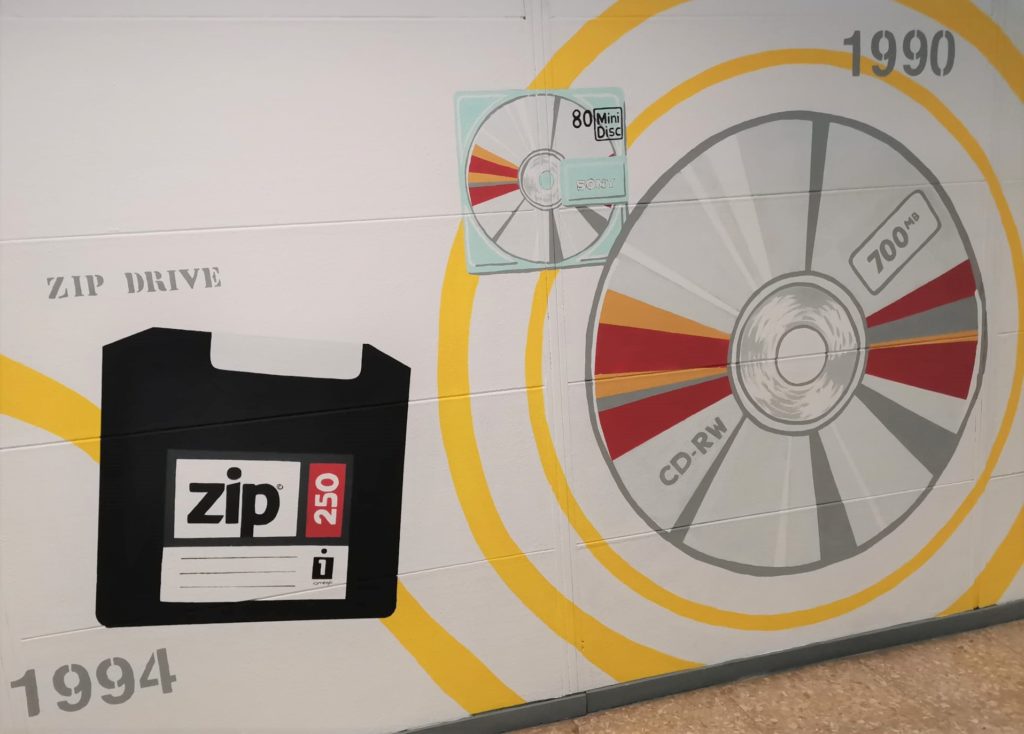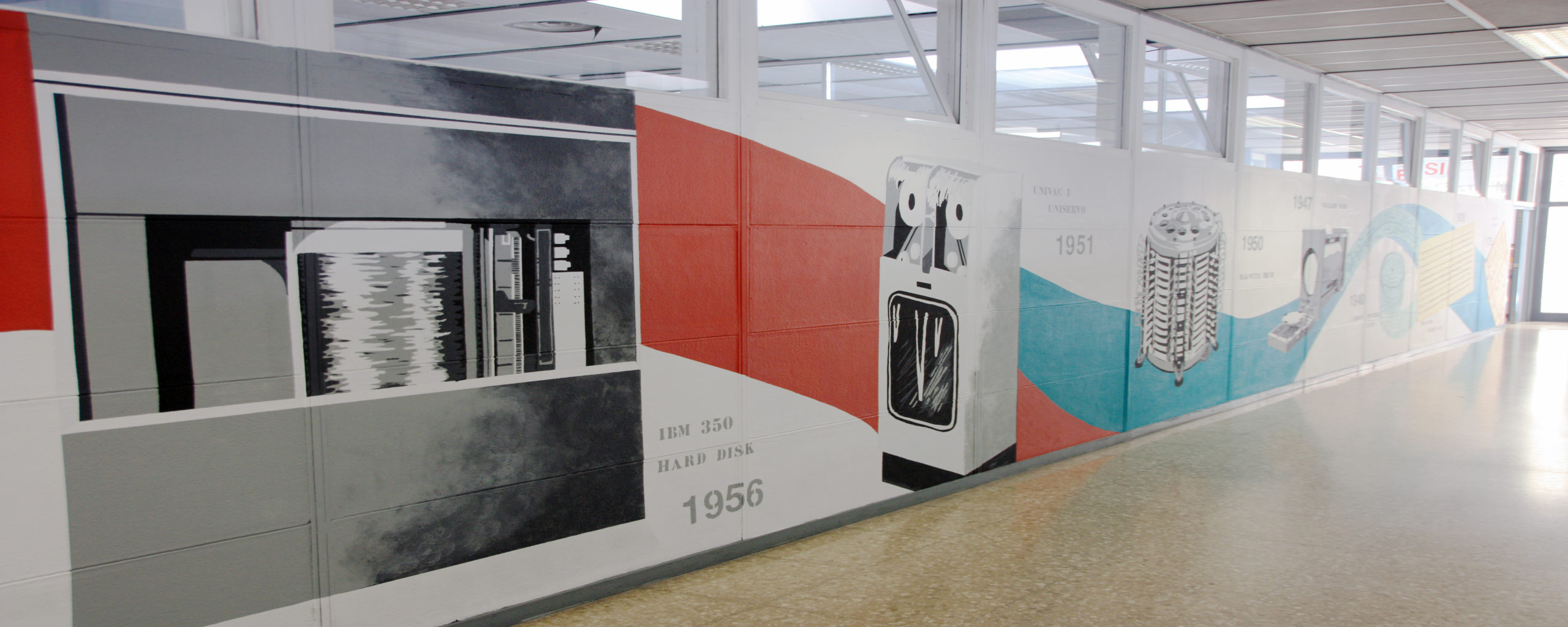Evolution of storage systems
In this mural we show the evolution of storage systems, from punched cards to cloud storage systems, through optical discs, hard drives, floppy disks, memory cards, etc.
History
When we talk about information storage we have to go back to the first forms of writing. However, if the objective of the storage of information is to process it with some machine, then it is only necessary to go back to the Industrial Revolution, when the use of the steam engine in the looms was considered. To do this, Basile Bouchon devised a way to encode and store the patterns or drawings of fabrics on punch cards, a mechanism perfected shortly after by Joseph Marie Jacquard.
In this context, Charles Babbage designed around 1820 the Analytical Engine, the forerunner of the modern computer, for the reliable calculation of mathematical tables. The Analytical Engine used Jacquard punch cards for data entry. The calculation program that Ada Byron published for this machine made her the first programmer in history.
At the end of the 19th century, punch cards were used successfully in the automatic preparation of the US census and represented the basis for the introduction of information in computers designed until no less than the 70s of the 20th century.
In the context of the first electronic computers, in the mid-20th century, the construction of high-capacity, fast-access storage devices was a challenge. Williams tubes, based on cathode ray tubes, were a first attempt.
In the 1950s, magnetism began to be used as the basis for recording information, first on soft media such as tapes and then on rigid media such as drums and discs. The principle is simple: a layer of magnetizable material is spread over a surface and the information is recorded in the form of small magnetic dipoles. The 1951 UNIVAC I computer featured tape drives that could store up to 128 drives or words per inch.
Soon the drum appeared, cylindrical in shape, with a capacity of around ten thousand words, but it was surpassed by the faster and more efficient hard drives. In a hard disk the magnetic material is spread over several circular platters that rotate at high speed. For each magnetic surface there is a head that allows the reading and writing of information. The first hard disk was the IBM 350, marketed in 1956, with a capacity of just over four million words of information. Over time, continuous improvements in magnetic technology made it possible to have inexpensive, high-capacity hard drives for all types of computers.
Despite the disadvantage of sequential access of tapes compared to the speed of hard drives, their lower price and greater capacity and adaptation to support backups, they made them the storage technology of the large mainframes and minicomputers of the second half of the 20th century and, surprisingly, they are still present in some computer systems of the 21st century, although their use is beginning to decline.
Compact and practical cassette tapes allowed the expansion of home computing during the 1980s. These tapes were replaced by floppy disks, which essentially use the same technology as hard drives but have a less rigid, lighter media. , with less storage capacity, but easily transportable.
In the 1990s, a medium with optical technology appeared: the compact disk or CD, an acronym for Compact Disk. Despite their larger storage capacity, they initially had the disadvantage of being read-only devices. For this reason, other types of short-lived floppy disks continued to be developed: Sony’s minidisc, or Iomega’s Zip and Jaz, are some examples, with capacities ranging from 100MB to 1GB.
Flash technology, a non-volatile electronic storage medium, appeared in the late 1990s. Initially developed for photography, it enabled the development of very compact storage devices that, although initially very expensive, soon far exceeded the capabilities of optical technology. In this way, since the beginning of the 21st century, solid state drives or SSD, for its acronym in English Solid State Drive, have facilitated the gradual replacement of magnetic hard drives in all types of computers. Thanks to flash technology, these drives reduce power requirements and increase transfer speeds.
Interestingly, the latest breakthrough in storage systems is not due to a technological development in this area, but in the field of computer networks. Indeed, the emergence of high-speed networks has allowed the creation of large computer centers focused on storing data, such as documents, photographs, videos, and so on. Known colloquially as “the cloud”, it is essentially a storage space built by means of a huge number of devices connected to each other and accessible through a network connection. Obviously, this is not the last step in evolution … what will be the next?
This mural has been made by the students of the subject of Painting and Environment of the 2020-2021 course of the Degree in Fine Arts of the Faculty of Fine Arts of the Polytechnic University of Valencia, directed by professor Juan Antonio Canales, to whom We thank you from the Computer Science Museum of the Polytechnic University of Valencia for your effort and dedication
This mural is exhibited in the hallway of building 1B of the ETSINF. Visit it and enjoy this little retrospective … and feel free to photograph yourself with your favorite storage system.







